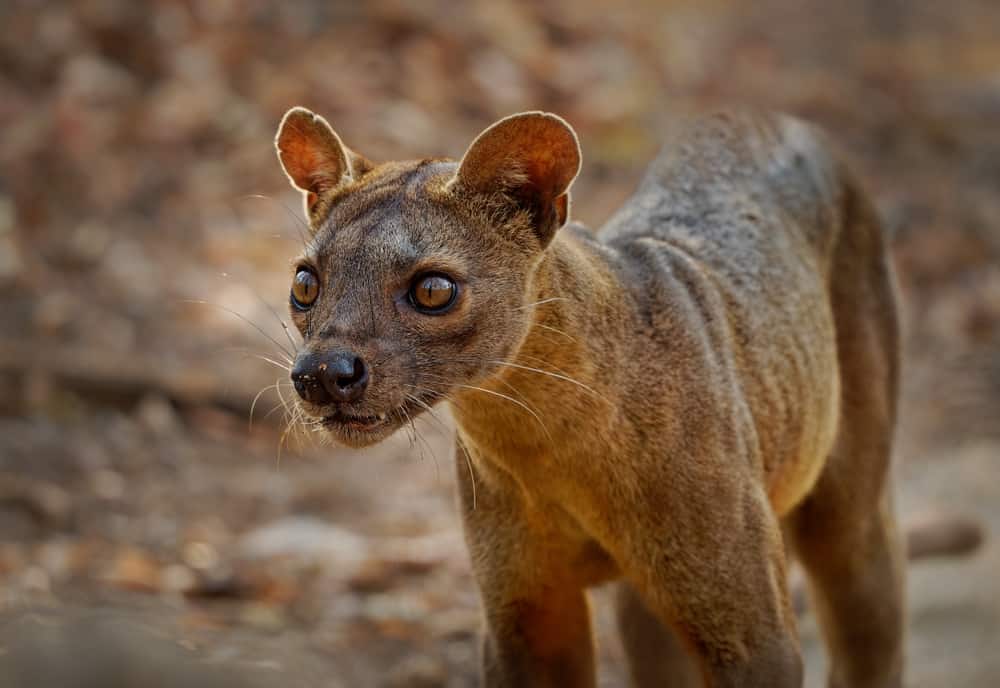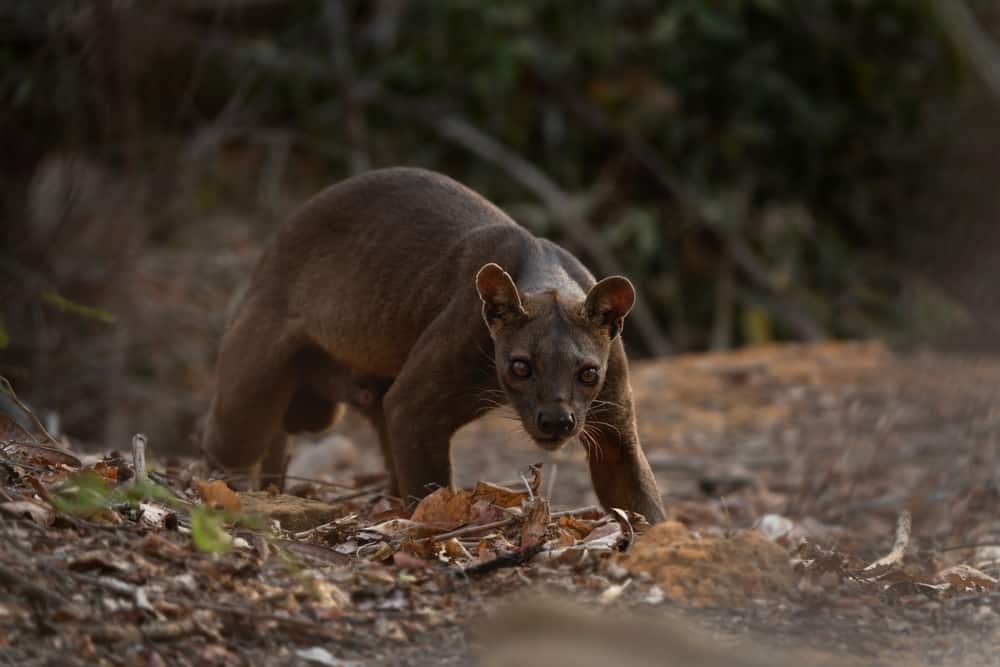Eupleridae, commonly known as the Malagasy carnivores or Madagascar carnivorans, are a group of mammals endemic to Madagascar.
This family consists of ten species that vary in size and morphology but share similar ecological niches. Euplerids are predominantly terrestrial predators that inhabit various habitats ranging from rainforests to dry savannas.
Euplerids have been an area of interest for researchers due to their unique evolutionary history and adaptations to their environment. Despite being related to mongooses and meerkats, euplerids have distinct morphological characteristics such as elongated bodies with short legs and specialized teeth adapted for hunting prey.
Furthermore, they exhibit diverse behavior patterns including solitary hunting, pair bonding, and social hierarchies among other things. These traits make them fascinating subjects for research into predator-prey relationships, biodiversity conservation efforts, and understanding the evolution of mammalian lineages on Madagascar.
In this article, we will explore the taxonomy, distribution, ecology, behavior biology and conservation status of euplerids in detail.

Subfamilies And Genus
- Subfamily Euplerinae
- Genus Cryptoprocta – fossas
- Genus Eupleres – falanouc
- Genus Fossa – spotted fanaloka
- Subfamily Galidiinae
- Genus Galidia – ring-tailed vontsira
- Genus Galidictis – striped vontsira
- Genus Mungotictis – narrow-striped boky
- Genus Salanoia – brown vontsira
Taxonomy Of Eupleridae
Eupleridae is a family of mammalian carnivores endemic to Madagascar. The evolutionary history of this group dates back to the Late Cretaceous period, around 70 million years ago. Their morphological characteristics are similar to other carnivorous mammals, including sharp teeth and claws for hunting prey.
The taxonomy of Eupleridae has undergone several changes over the years due to new genetic evidence that suggests different relationships among members within the family. Currently, there are ten recognized species in two genera: Eupleres and Cryptoprocta.
These animals play an important role in the ecosystems they inhabit as both predators and scavengers, helping to maintain balance in their environments. Despite being relatively small and elusive creatures, euplerids have captured the attention of scientists worldwide who aim to better understand their unique biology and evolution.
Distribution Of Eupleridae In Madagascar
Eupleridae, also known as Malagasy carnivorans or locally referred to as the fosa family, are a group of endemic carnivores found exclusively on the island of Madagascar.
There are ten species within this family that occupy different regions of the island with varying degrees of distribution and population sizes.
The largest species is the fossa (Cryptoprocta ferox), which inhabits most areas throughout Madagascar except for arid zones, while some other species such as the narrow-striped mongoose (Mungotictis decemlineata) have more restricted ranges.
Despite their unique evolutionary history and ecological importance, many euplerids face threats from habitat loss due to slash-and-burn agriculture and deforestation, making them endangered species.
The population trends of euplerids vary considerably among each species depending on factors like range size and habitat suitability.
Some populations appear stable or even increasing in certain locations where they receive protection from national parks, but others experience rapid declines due to human activities such as hunting and trapping for bushmeat trade.
For example, the highly specialized and rarest member of this family – the Malagasy civet (Fossa fossana) – has experienced a significant decline in numbers over recent years primarily because it only occurs in fragmented forests located near populated areas where there is high pressure on natural resources.
Therefore, further research into population dynamics and conservation strategies is essential to ensure long-term survival of these fascinating animals across their entire range.
Ecological Niches Of Euplerids
Ecological niches of Euplerids are diverse and dynamic. The unique features of this family have enabled them to occupy a wide range of habitats, from dry deciduous forests to humid rainforests.
One figure of speech that aptly describes the ecological niches of eupleridae is ‘jack-of-all-trades.’ These animals have evolved to be versatile predators with an array of dietary preferences.
The predation patterns among Eupleridae vary depending on their geographical location and habitat type. For instance, some species like fossa (Cryptoprocta ferox) in Madagascar mainly hunt lemurs, while others such as Malagasy civet (Fossa fossana) prey on smaller mammals, insects, reptiles, and birds.
Additionally, dietary preferences also influence the behavior of these carnivores; for example, some species are nocturnal hunters while others are diurnal scavengers.
In conclusion, the diversity in ecological niches among Euplerids has made them successful colonizers across various ecosystems with different predation patterns and dietary preferences.
Behavioral Biology Of Euplerids
Euplerids are a group of carnivorous mammals that exhibit various behavioral adaptations to survive in their habitats. The social structure of euplerids varies among species, with some being solitary while others live in groups.
For instance, the fossa (Cryptoprocta ferox) is mostly a solitary animal, except during mating season when pairs form temporary bonds. On the other hand, ring-tailed mongoose (Galidia elegans) and fanaloka (Fossa fossana) may live in family groups consisting of an adult pair and offspring from different litters.
Hunting strategies used by euplerids depend on several factors such as prey availability and habitat type. Some species like the fossa have specialized hunting techniques where they climb trees to ambush their prey, which mainly consists of lemurs. Others like the Malagasy civet (Fossa fossana), hunt small vertebrates and insects by digging through leaf litter or using scent marking to locate prey.
Moreover, studies indicate that euplerids possess efficient senses of smell and hearing that aid them in detecting prey; however, further research is required to understand how these abilities vary across different species depending on their ecological niche.
Conservation Status Of Euplerids
The conservation status of euplerids is a matter of concern due to the various ecological threats that have been identified.
Habitat loss, fragmentation, and degradation are some major factors affecting these animals.
Deforestation for agricultural purposes, logging activities, mining, and urbanization has resulted in habitat loss and fragmentation leading to reduced population sizes and genetic diversity.
Invasive species such as rats, cats, dogs, and mongoose pose a significant threat to euplerids by preying on them or competing with them for resources.
Conservation efforts aimed at preserving euplerid populations have focused on protecting their habitats from further destruction through habitat restoration programs and protected area management.
The establishment of national parks such as Andohahela National Park (ANP) in Madagascar has helped protect the remaining habitats of threatened species like Fosa (Cryptoprocta ferox).
In addition to this, captive breeding programs have been initiated for certain species like fossa which can help supplement wild populations if required.
Overall, it is critical that effective measures continue to be taken towards conserving euplerid populations given their significance as apex predators in Madagascar’s ecosystems.

Importance Of Euplerids In Biodiversity Conservation
The conservation status of euplerids has been a major concern for wildlife biologists and conservationists. These unique carnivores play an important role in their ecosystems, contributing to the maintenance of biodiversity through predation on small mammals, reptiles, and birds. However, they face several threats that put them at risk of extinction.
One of the primary threats faced by euplerids is habitat loss due to deforestation and human encroachment. This results in fragmentation and degradation of their natural habitats, leading to reduced populations and genetic diversity.
Additionally, hunting for bushmeat and fur trade poses a significant threat to these animals. The introduction of non-native species such as rats also threatens euplerid populations by competing for resources or preying upon native prey species.
As predators at the top of their food chain, euplerids are also vulnerable to bioaccumulation of toxins from polluted environments, which can have detrimental effects on their health.
Despite these challenges, it is essential to conserve euplerid populations for the benefits they provide to their respective ecosystems. Euplerids help regulate prey populations and maintain ecological balance within their habitats. They also contribute to the cultural identity and heritage of communities living near forests where they occur.
Therefore, protecting euplerids’ habitats, regulating hunting practices, controlling invasive species introductions, and monitoring environmental quality are crucial steps towards ensuring the long-term survival of these fascinating creatures in Madagascar’s rapidly changing landscape.
Conclusion
Eupleridae are a group of carnivorous mammals native to Madagascar. They belong to the order Carnivora and family Eupleridae, which includes ten species such as the fossa, fanaloka, and falanouc.
Studies have shown that their closest living relatives are mongooses, but they differ significantly in morphology, behavior, and ecological niches.
Euplerids inhabit various habitats across Madagascar ranging from rainforests to dry forests and spiny bushes. Their unique physiology enables them to adapt to different environments where they play important roles in ecosystem functioning.
For instance, some euplerid species prey on lemurs, while others feed on small mammals or reptiles.
The behavioral biology of euplerids is another area of research interest for scientists studying these animals. Researchers have documented social behaviors such as scent marking and vocal communication within euplerid populations.
Additionally, studies suggest that some euplerid species exhibit high levels of intelligence with advanced problem-solving abilities compared to other members of the Carnivora order.
Despite their importance in maintaining biodiversity in Madagascar’s ecosystems, many euplerid species face significant threats such as habitat loss due to deforestation and human activities like hunting for bushmeat trade.
Therefore, conservation efforts need urgent attention to ensure the survival of these remarkable creatures symbolizing resilience amidst adversity.
In conclusion, Eupleridae represent an essential component of Madagascar’s unique fauna whose diversity remains threatened by anthropogenic activities.
As researchers continue investigating their taxonomy and ecology further, we must recognize the significance of conserving these fascinating creatures symbolizing the value of nature’s intricate web-of-life.
Through our collective effort towards protecting endangered wildlife like euplerids globally, we can preserve Earth’s biological heritage for generations yet-to-come.

